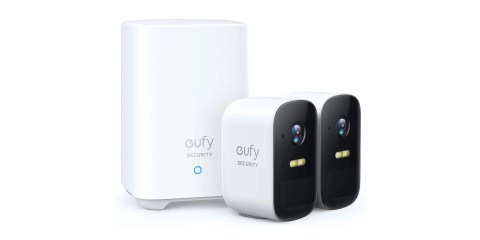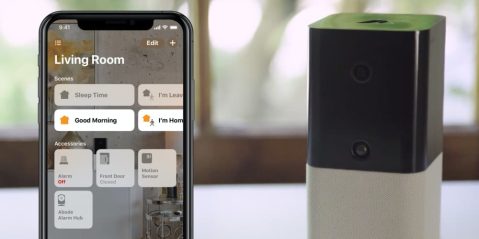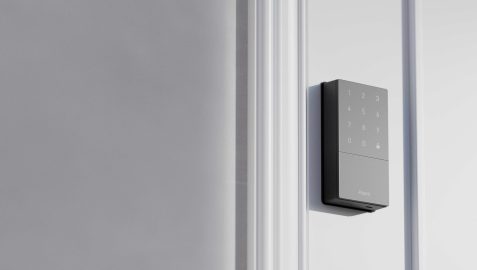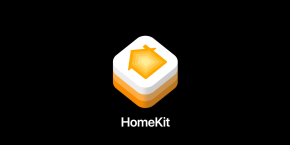
As much as I have been investing in my HomeKit setup over the past few years, HomeKit security cameras are something I hadn’t been able to pull the trigger on. My hesitation is that I didn’t want to be tied to paying monthly fees for each camera, nor did I want a solution that required a cloud service that wasn’t end-to-end encrypted. For my HomeKit cameras, I ended up using the eufyCam 2 thanks to it the option of local recording to a base station, no monthly fees, HomeKit integration, battery-powered and the possibility of using HomeKit Secure Video. Let’s dig into my eufyCam 2 review.
HomeKit Weekly is a series focused on smart home accessories, automation tips and tricks, and everything to do with Apple’s smart home framework.
HomeKit Cameras with no monthly fees
One of the things I was looking for in a camera solution was the avoidance of monthly expenses. eufyCam 2 records back to an SD card inserted into the base station. This setup accomplishes two goals for me: no monthly fee and that the camera maker cannot view my stream. eufy offers the option to ‘donate’ specific clips to help improve their AI, but that is up to me when I choose to send. eufy is also working on the ability to upgrade to an external hard drive connected to their base station for additional support.
HomeKit Integration
eufyCam 2 has great HomeKit support that was a breeze to set up (inside the eufy app), and it’s been reliable since the day I installed it. HomeKit support enabled a couple of nice options with cameras. The first thing is that the motion detection in the cameras can be used to trigger other HomeKit items. In my situation, I am using a eufyCam to trigger my Philips Hue Flood Lights on the front porch. I had previously been using Philips outdoor motion sensor, to accomplish this, but it became redundant with the EufyCam. The eufyCam 2 has a much better angle to detect motion as well.

Video wise, I am not using the Home app to watch the videos. Typically, I am using the HomeCam app for watching live, and I use the Eufy app for watching past scenes. As my HomeKit setup has expanded, the app is getting harder to use. If I would not have to scroll to the bottom of the Home tab to find my cameras, I’d prefer that. In contrast, HomeCam is a dedicated app for viewing all of your HomeKit cameras.
Battery Powered

In a perfect world, I’d have all of my cameras wired into power and ethernet, but that isn’t a reality for me at the moment. To get the wiring to the locations I want cameras would require a lot of cable pulling and drilling through walls, so it’s not happening.
One downside here is that, to save battery, I have my cameras set to only record human motion. Now, normally would not be an issue, but I actually just had a situation where I would have loved 24/7 recording. Last Sunday night, my city was hit by tornados (check out drone footage here). A very large tree hit the back of my house right above where one of my cameras are mounted. While our power was off, I kept wondering if the camera somehow caught the tree falling. I just got power back this morning, so I was excited to check the cameras. Unfortunately, they didn’t, but that isn’t a flaw of the Eufy cameras, but more of a benefit of hardwired models that include 24/7 cloud monitoring.
The eufyCams talk directly back to its base station that is hard-wired into my router. The base station can be used on Wi-Fi as well. Battery wise, the eufyCam 2 boasts of 365 days on a single charge (mini USB). I’ve had the cameras running for five weeks, and one of them is showing 92% charge in the Home app, and the other is 93%, so it appears it’s losing 1.5% of battery per week. Based on the data I see so far, the claim of a year-long battery is very accurate. I plan to take them down when I clean out my gutters and give them a fresh charge. One benefit of using battery-powered cameras is that it’s easier to upgrade in the future. I don’t have to worry about choosing a camera that uses the same kind of power cord. If something else better comes along, all I have to do is purchase, charge, and mount.

Installation Process
For a lot of people looking for eufyCam 2 reviews, the installation process will be a big factor. After I unboxed the cameras and charged them, I looked at the installation process. It consisted of drilling two small holes, screwing in the mount, and then attaching the camera. One nice touch the eufyCam 2s have is to sound an alarm if the camera is moved (you can disable this for when you need to remove it).
Wrap-up on eufyCam 2 review
One feature of the eufyCam that I am really enjoying is the motion detection when we get packages delivered. We took a trip to Disney World earlier this year, and I was able to give my neighbor an alert when we had packages from him to grab off the porch.
The eufyCam 2 kit checks every box for me when it comes to video cameras. It’s private by default, requires no monthly fees, and has a long-lasting battery. With its new HomeKit Secure Video support, it’s even more of an attractive purchase. Setup was dead simple, and I’ve been impressed with the reliability of the Eufy app as well.
I like the system so much that I went ahead and installed a eufy Wired Doorbell as well. You can purchase eufyCam 2 as a complete kit or buy a single camera if you want to add on an additional one.
FTC: We use income earning auto affiliate links. More.








Comments